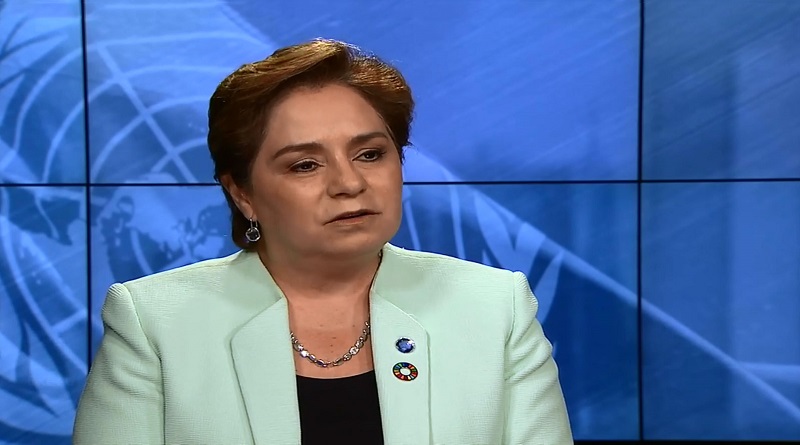How cities, businesses can help countries to surpass pledged emissions cuts-Study
Climate commitments by cities, regions and businesses could push countries to over-achieve their emissions reduction goals under the Paris Agreement, giving national leaders more confidence to ramp up efforts to avoid the worst impacts of global warming.
A report released on Wednesday 18 September 2019 confirms previous findings on the significant potential for local governments and corporations to slash greenhouse gas emissions, especially when working through international partnerships such as the Global Covenant of Mayors, C40, We Are Still In and the Under2 Coalition.
It finds that in 10 of the world’s biggest-emitting economies, the known and quantified climate commitments set individually by more than 6,000 cities and regions and 1,500 companies could reduce greenhouse gas emissions by 1.2 to 2 gigatonnes of carbon dioxide equivalent (GtCO2e) per year by 2030, in addition to the reductions those governments plan to make. These cuts amount to roughly 4 percent of global emissions today, but they are only possible if individual commitments are fully implemented. The 10 economies are: Brazil, Canada, China, the European Union, India, Indonesia, Japan, Mexico, South Africa, and the United States.
In Japan and Mexico, action by cities, regions, and business could help governments meet current national targets. In China, India, and the European Union, they would help governments overachieve their pledges. In Brazil, Canada, Indonesia, South Africa, and the United States, cities, regions and businesses can help close the gap between current policies and national targets.
However, local governments and corporations worldwide could make even greater emissions cuts when they come together to address common goals through joint initiatives, often alongside national governments. The 17 high-performing international initiatives analysed in this report could reduce emissions by 18 to 21 GtCO2e per year by 2030 beyond current government efforts. These reductions equate to nearly one-third of global greenhouse gases — enough to keep the global temperature rise within 2°C, rather than the 3°C or more that national pledges under the Paris Agreement are on track to reach.
All of this potential is promising, but it will only be achieved with substantial work. The international initiatives must expand their memberships, scale up their work, and ensure they do not displace climate efforts elsewhere. Individual local governments and companies must work to make their commitments reality. And better data and reporting is needed to measure additional climate action outside of national governments, which could not be assessed in this report.
Yet even if all of these commitments are fully met, they are not enough to keep the temperature rise to 1.5°C, which the Intergovernmental Panel on Climate Change says will significantly limit devastation for millions of people, plant and animal species compared to 2°C. The global economy is still ill-prepared to protect humanity from the worst impacts of climate change and urgently needs stronger and faster action from all national, local and private sector parties.
The results show national leaders already have greater space to hike their targets, thanks to commitments by their local governments and corporations. Some of the 10 major emitters analysed in the report could even over-achieve their existing Paris pledges, including (and see more specific country findings below):
In the European Union, the full implementation of recorded and quantified individual commitments by cities, regions and companies could lead to an emissions reduction of up to 48 percent by 2030 from 1990 levels — a 20% jump from the current goal of at least 40 percent.
In India, their commitments would add a 5.5 percent reduction to the current national policy projections for 2030 (equal to 3,800 to 4,200 million tonnes (Mt) of CO2e per year). The national policy already puts India on track to surpass its Paris pledge by 1,100 to 1,900 MtCO2e per year.
In Japan, city, region and business commitments would lower emissions by up to 70 MtCO2e per year below the country’s Paris pledge by 2030.
Subnational and corporate commitments are particularly important in countries like Brazil and the US, where national leaders are unravelling climate policies. In the United States, these commitments could put the country in range of meeting its climate pledge for 2025, despite efforts by the Trump administration to roll back policies.
To align with a 1.5°C limit, national governments must incorporate these city, regional and corporate commitments into their Paris Agreement plans, which are due to be revised and upgraded by 2020. The should also set policies to help these commitments become reality and share financial and technical resources to implement or scale them up. Cities, regions and businesses must do their part by fulfilling their commitments, and increasing them. International initiatives can help national and non-state actors cooperate on common goals, for instance to end deforestation or expand renewable energy and clean transport networks.
“We have shown that cities, regions and businesses set themselves emission reduction goals, many of which are very ambitious. Now these commitments need to be implemented. This is only possible if these actors and national governments work together, mutually reinforcing their activities,” said Dr. Takeshi Kuramochi, the project leader and senior climate policy researcher at NewClimate Instiute.
The report builds on a study released prior to the Global Climate Action Summit in September 2018, which featured thousands of city, region, and corporate leaders and announced nearly 500 new climate change initiatives. This 2019 assessment aims to inform the United Nations’ Climate Action Summit on September 23, which calls on leaders from government, business, civil society and elsewhere to strengthen their commitments in line with a 1.5°C limit.




